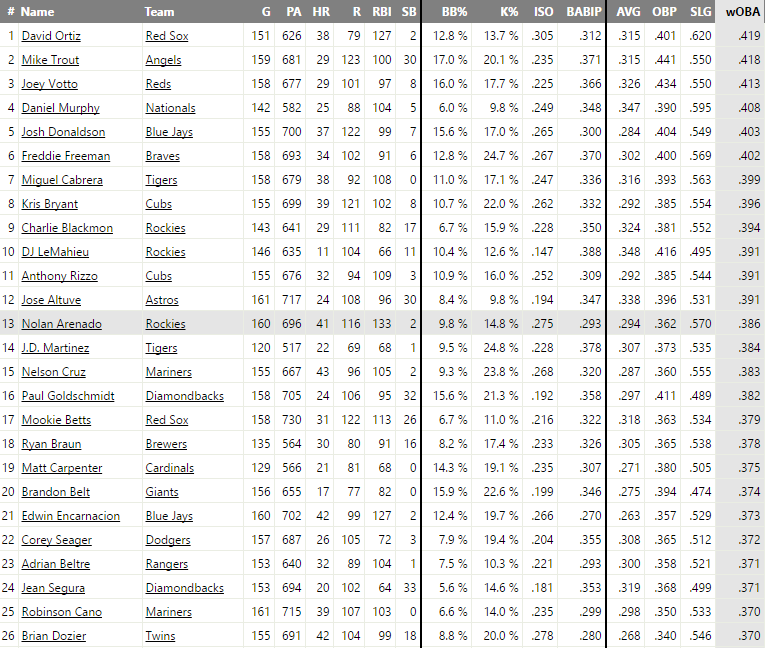Guide to Advanced Stats
Modern day baseball emphasizes advanced stats more than ever before. Gone are the days were people argued over the superiority of a hitter based on his batting average and RBI or whether a pitcher was better based on wins and ERA. There are so many new measures for hitting, pitching, fielding, base running and even pitch framing that it can become dizzying. Some of the formulas for popular measures such as WAR are so complicated it seems you would need a masters degree in mathematics from Harvard to completely understand what is actually going on. For example, below is a link to FanGraphs, where they try to explain the components of WAR for position players........good luck.
[WAR for Position Players | FanGraphs Sabermetrics Library]In this this series of posts I just want to layout why some newer more advanced stats such as w/OBA (Weighted On Base Average), wRC+ (Weighted Runs Created Plus) or FIP (Fielding Independent Pitching) are superior in analyzing a player as opposed to more basic stats such as Batting Average, RBI and ERA. The first stat we will focus on is w/OBA and why it is better in determining a players offensive output as opposed to a more basic stat like batting average.
w/OBA over Batting Average
Batting Average is one of the most popular and well know offensive statistics among players and fans. Batting Average is a simple stat with the formula being: number of hits / at bats. Although it does do a nice job of showing you who some of the more superior hitters in the game are, it falls short in a few different ways. As we know not all hits are created equal and with batting average it credits you the same amount whether your hitting a bloop single or a home run. Its obvious that a single contributes to your teams offensive output but not nearly as much as a double, triple or home run does. Another issue with batting average is that it doesn't take into account walks or hit by pitches at all. Any time you don’t make an out, you’re positively contributing to the run scoring process. OBP (On-Base Percentage) for instance, captures this better than batting average because it incorporates a big chunk of offensive activity that batting average doesn't take into account. Weighted On-Base Average goes even beyond the realm of On Base Percentage. Weighted On-Base Average combines all the different aspects of hitting into one metric, weighting each of them in proportion to their actual run value. Below is a definition of w/OBA from FanGraphs that does a good job of explaining it and also provides the formula:

As you can see from the formula above there are numbers that are given before any of the players stats can be incorporated. These numbers are determined using linear weights which is a long complicated mathematical process we don't need to go into today. But as you can see a uBB (unintentional walk) is worth .69, a double is worth 1.27 and a home run is worth 2.10. Once you add in all the players totals and do the math the players w/OBA is uncovered.
Not to complicated right?
The one thing you need to take away regarding w/OBA is that it is a more comprehensive statistic and it more accurately determines how well a player contributes to run scoring as opposed to Batting Average and OBP.
Now that you have learned about w/OBA and how it measures offensive value you probably want to see who the leaders in this stat were in 2016......well here you go:

And here is another chart to give you some context as to what is a good w/OBA and what is not so good:

Thanks for reading. In my next "Guide to Advanced Stats" post we will go over w/RC (Weighted Runs Created) which quantifies a player’s total offensive value and measures it by runs.


